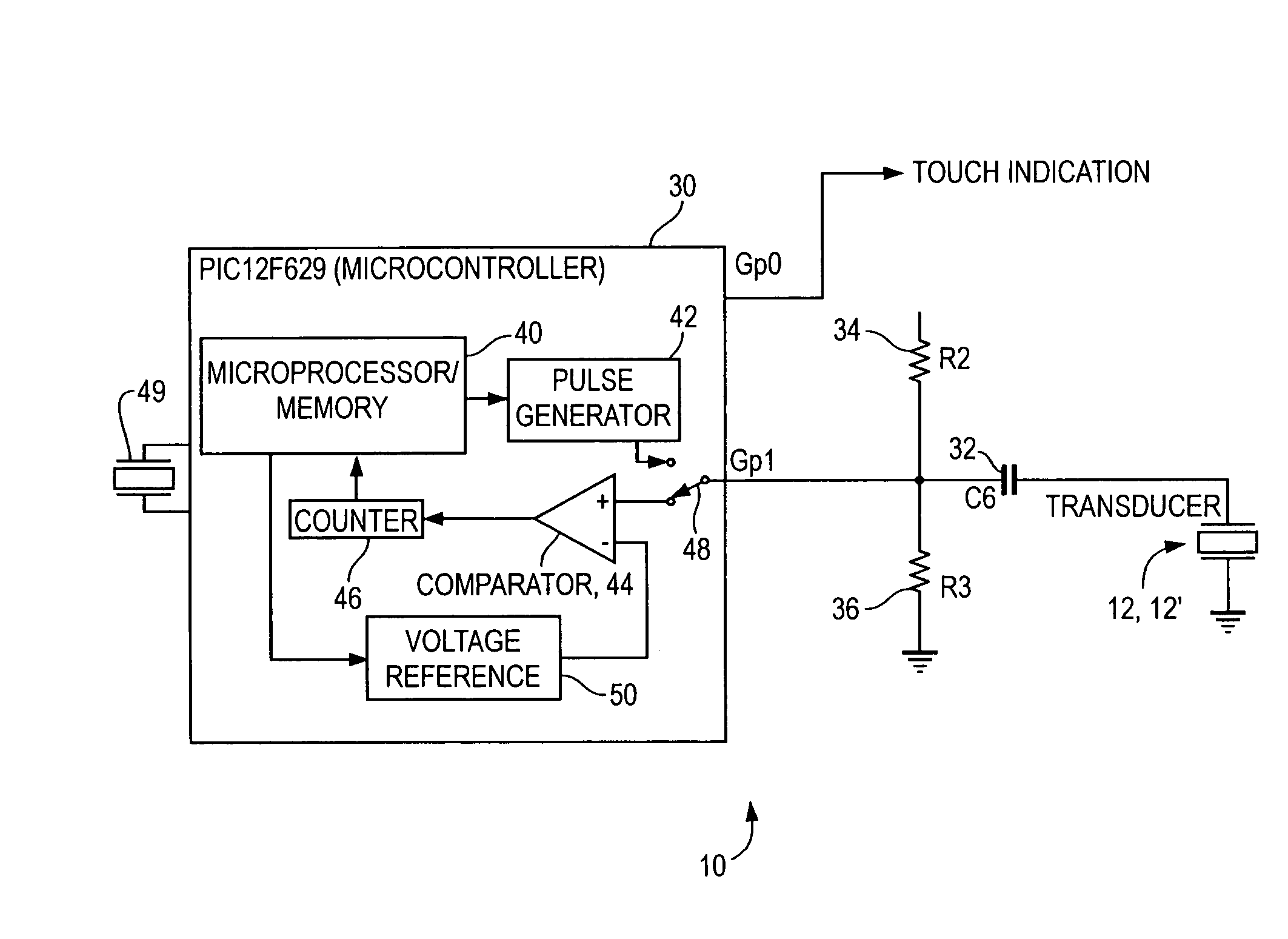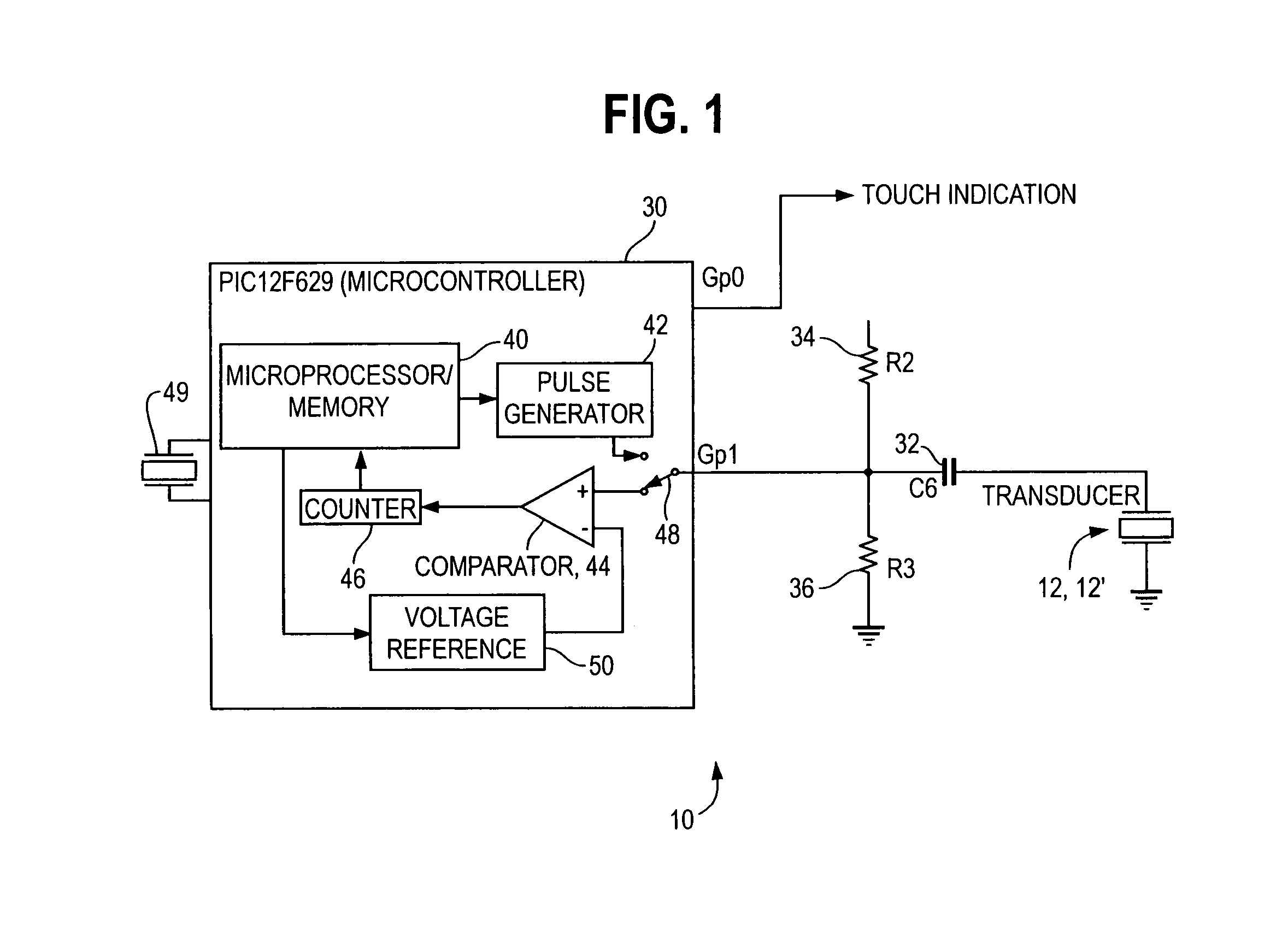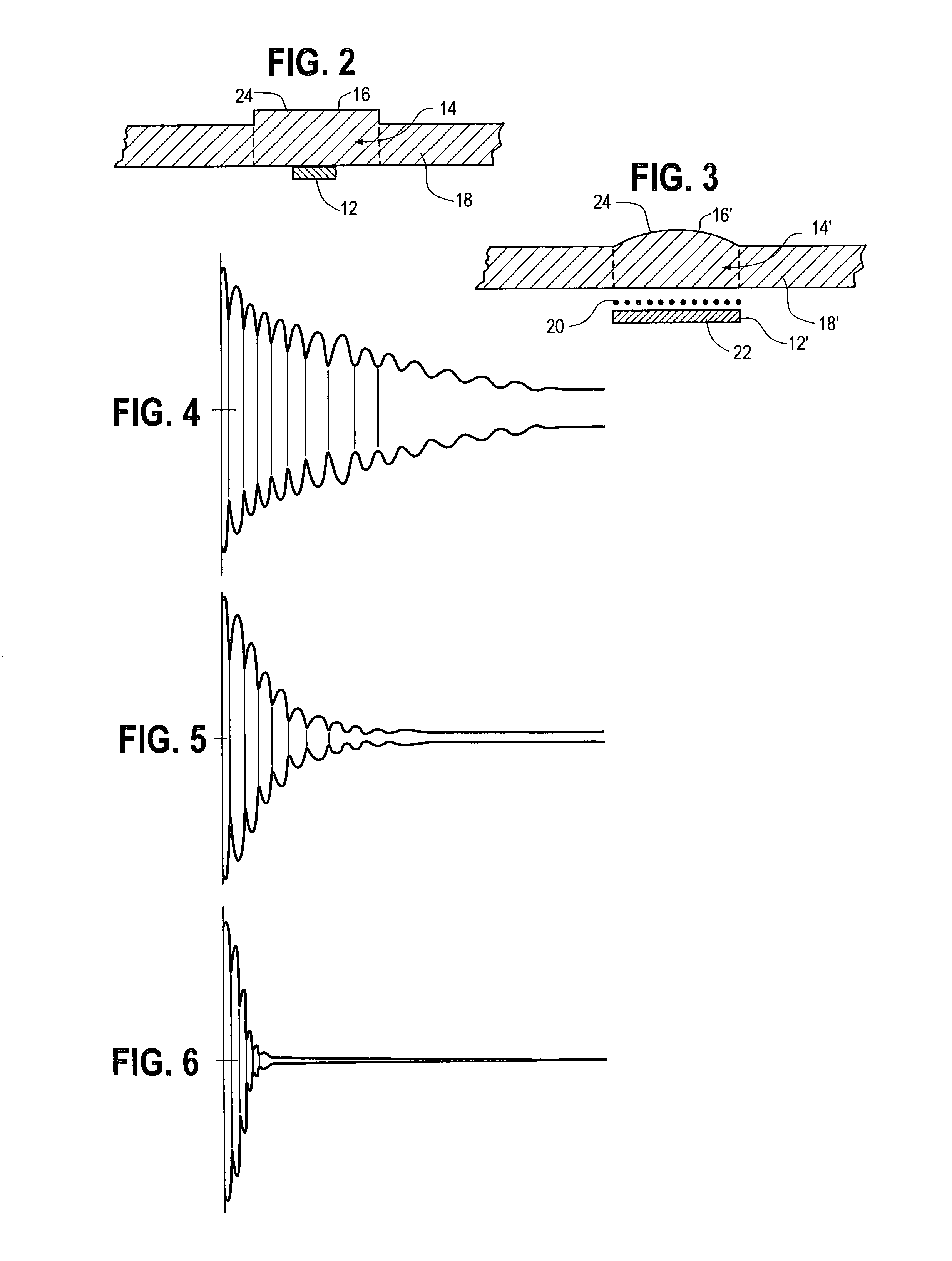Acoustic wave touch detection circuit and method
a detection circuit and touch technology, applied in the field of touch detection circuit and method, can solve the problems of inability to use metals and the like, relatively unprotected piezoelectric elements, and high price of switch types, and achieve the effect of disadvantages of prior acoustic wave sensor circuits
- Summary
- Abstract
- Description
- Claims
- Application Information
AI Technical Summary
Benefits of technology
Problems solved by technology
Method used
Image
Examples
Embodiment Construction
[0035]An acoustic wave sensor 10, in accordance with the present invention, as shown in FIG. 1 includes a transducer 12, 12′ for generating an acoustic wave in an acoustic wave cavity. In one embodiment as shown in FIG. 2, the transducer 12 is mounted on the acoustic wave cavity and in a second embodiment, as shown in FIG. 3, the transducer 12′ is mounted adjacent to the acoustic wave cavity.
[0036]As shown in FIGS. 2 and 3, the acoustic wave cavity 14, 14′ is defined by a raised area 16, 16′, the cavity extending through the thickness of the substrate 18, 18′ under the surface 24 of the raised area 16, 16′. The acoustic wave cavity 14, 14′ is formed in the substrate 18, 18′ such that the mass per unit surface area of the cavity 14, 14′ is greater than the mass per unit surface area of the substrate immediately adjacent the cavity 14, 14′. It is noted, that the acoustic wave cavity can also be defined by an area of increased mass that is not raised above the substrate. Such cavities ...
PUM
 Login to View More
Login to View More Abstract
Description
Claims
Application Information
 Login to View More
Login to View More - R&D
- Intellectual Property
- Life Sciences
- Materials
- Tech Scout
- Unparalleled Data Quality
- Higher Quality Content
- 60% Fewer Hallucinations
Browse by: Latest US Patents, China's latest patents, Technical Efficacy Thesaurus, Application Domain, Technology Topic, Popular Technical Reports.
© 2025 PatSnap. All rights reserved.Legal|Privacy policy|Modern Slavery Act Transparency Statement|Sitemap|About US| Contact US: help@patsnap.com



